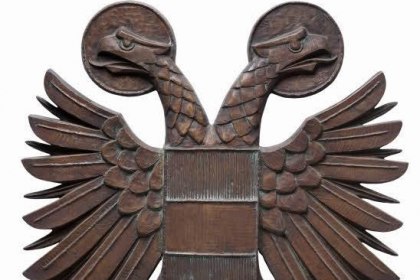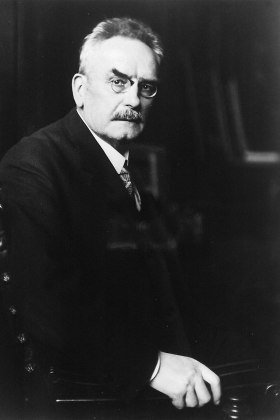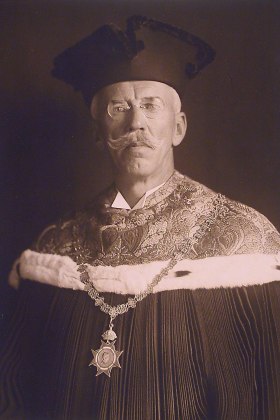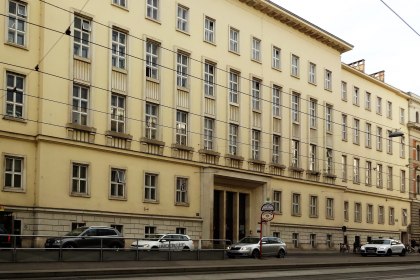Terror against the Anatomical Institute of Julius Tandler
In the inter-war period, beginning in 1920, anti-Semitic attacks regularly occurred at the University of Vienna, and became more radical towards the middle of 1933. These attacks’ main site was, apart from the university’s main building, the First Anatomical Institute, which was led by internationally renowned anatomist and social democratic healthcare politician Julius Tandler. The many riots, designed to intimidate Tandler, his colleagues, and his students, claimed numerous injuries and helped create an atmosphere of civil war at the University of Vienna in the First Republic.
If one is to believe the entry on the history of the University of Vienna on the German-language Wikipedia, the inter-war period seems to have been relatively peaceful at Austria’s largest and oldest university. The corresponding segment reads: “In 1928 university riots occurred, in 1932 there were also student riots, combined with protests in front of the university’s main entrance”. This statement has a single, unreliable source: a commemorative publication by the federal police headquarters of Vienna from 1949. Not only does it downplay the actual events, it is simply false.
When one consults other sources – such as reports from daily newspapers, autobiographical accounts or other archive material – a completely different picture emerges: From 1920 onwards, there were violent attacks, increasing in frequency, on Jewish and leftist students, reaching their peak in the early 1930s.
Hot spot Währinger Straße 13
Apart from the university’s main building, the First Anatomical Institute at Währinger Straße 13, led by Julius Tandler, was the second hot spot for these attacks. Between 1920 and 1933 almost regularly riots and brawls occurred that by some miracle never led to any deaths, but repeatedly caused severe injuries.
The tradition of anti-Semitic riots at the Medical Faculty of the University of Vienna goes back to 1875. The fact that they reached new pinnacles after 1918 was related to an increase in the immigration of so-called “eastern Jewish” students during the First World War, as well as to the bad economic situation in the post-war period. Politicians and student representatives also fueled the anti-Semitic climate, with the “Hakenkreuzler” (name for National Socialist sympathizers in Austria), who were becoming more influential, being particularly active in this regard.
Because there was no numerus clausus for Jewish students at the University of Vienna – in contrast to other universities in Poland and Hungary for example, but also at several US-universities – physical and psychological violence was supposed to help reduce the number of Jewish students, a practice that was often tolerated by the rectors.
Tandler as a “red rag”
Why Julius Tandler and his institute became a target of the riots can easily be explained: The internationally renowned anatomist had been a city council member in charge of public welfare and health care in “Red Vienna” since 1920, and thus was one of the most politically visible and exposed professors with Jewish heritage. Tandler recorded the attacks; he called his compilation “chronology of terror”. He began noting down the incidents on April 26, 1920, when among other things a glass door was destroyed in the institute during one of the anti-Semitic riots.
At the end of 1923, the unveiling of the so-called „Siegfriedskopfs“ and the failed coup attempt by the National Socialists in Germany led to the first very serious riots that had nine severely injured victims. Again, Julius Tandler’s institute had been a scene of the fights. Tandler complained to the university administration about the lax persecution of the perpetrators.
International media coverage
After smaller attacks in 1925, the year of 1927 again saw heavy devastation and brawls with several injured victims. These anti-Semitically motivated attacks, which the German-nationalistic Rector Hans Molisch condemned only halfheartedly, were noticed internationally. The New York Times, for example, wrote on June 19, 1927: “Vienna students are once more taking to politics instead of the study of books (…) In fact, the whole political situation of the country has been upset by the students.”
While RectorTheodor Innitzer took rigorous action against the National Socialist instigators in 1928/29, this situation changed again with his successor, Wenzel Gleispach, a Heimwehr-member and “Hakenkreuzler”-sympathizer himself. From the fall of 1929 the university and Tandler’s First Anatomical Institute were in a constant state of emergency.
This spiral of violence became more and more aggressive and brutal until summer 1933. There certainly was some resistance, but the aggressors almost always were the well-organized groups of National Socialists or Heimwehr-students. This was, for example, also the case in the severe riots after Gleispach’s student regulation was rejected in June 1931.
Climax of terror in 1932/33
Finally, the extreme acts of violence under Rector Othenio Abel in 1932/33 even gained international diplomatic attention: After heavy attacks on Tandler’s Anatomical Institute on October 26, 1932, in which brass knuckles, whips, knives, and rods were used, injured US-American students turned to their consulate. The New York Times again reported on these and the following riots in detail.
Despite the Rector’s assurances to the Chancellor and the consulate that he would restore order, the violence escalated. On March 17, 1933, 40 National Socialist students equipped with steel rods, rubber clubs, chair legs and leather straps, stormed the Anatomical Institute and injured several students, two of Tandler’s assistants and a laboratory technician. As it had been the case so often before, the university again had to be closed.
The last act of violence in 1933
The last extreme act of violence occurred on May 9, 1933: After the end of a lecture, National Socialist thugs forced students at the First Anatomical Institute into a corridor that led to the dissection room and a student café. Some panicked and – partly already injured – jumped from the first floor windows and injured themselves even more. When the liberal “Neue Freie Presse” took stock of the incident, twelve arrests and 20 severely injured victims were reported, among them nine students from the United States.
Exasperated by the events, Julius Tandler accepted a teaching appointment in China in 1933. After the Austrofascists came to power in 1933/34, the anti-Semitic terror by National Socialist students was fought more efficiently, leading to widespread calm. Tandler himself, however, was also not wanted by the new rulers: Immediately after his return from China in March 1934 he was arrested and forced into retirement for political reasons.
Articles
- Anti-Semitism at the University of Vienna
- “Furor teutonicus and racial hate”
- Student corporations in the 19th and 20th century
- The “Bärenhöhle” – a secret anti-Semitic group of professors in the inter-war period
- The Gleispach’sche Studentenordnung (Gleispach Student Regulation)
- Terror against the Anatomical Institute of Julius Tandler
- Expulsion of teachers and students in 1938
- The de-Nazification of the professorate at the University of Vienna
- Students and teachers as political actors in the 19th and 20th centuries
- Student corporations in the 19th and 20th century
- Terror against the Anatomical Institute of Julius Tandler
- Dismissal of political enemies at the University of Vienna during Austrofascism
- Expulsion of teachers and students in 1938
- External restructuring by the “Führer-principle” and National Socialist officials
- The de-Nazification of the professorate at the University of Vienna
-

Harassed students of the I. Anatomical Institute of Julius Tandler on 9 May 1933
-

Der Hörsaal am I. Anatomischen Instituts von Julius Tandler nach den Ausschreitungen am 9. Mai 1933
-

Julius Tandlers I. Anatomisches Institut nach den Ausschreitungen am 2. Februar 1931
-
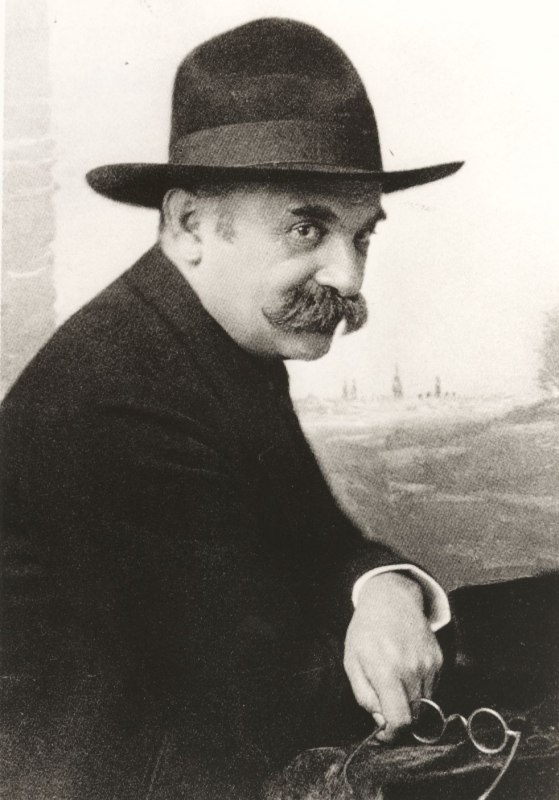
Julius Tandler (1869–1936), Anatomy
Last edited: 10/30/23

